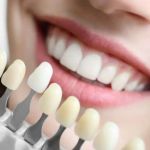How to Protect Your Teeth from Acid Erosion
- 1. Understanding Acid Erosion
- 2. What Causes Acid Erosion?
- 3. Symptoms of Acid Erosion
- 4. How to Prevent Acid Erosion
- 5. Real-Life Cases of Acid Erosion Protection
- 6. When to See a Dentist for Acid Erosion
1. Understanding Acid Erosion
Acid erosion, also known as dental erosion, occurs when acidic substances wear away the enamel on your teeth. Over time, this can lead to sensitivity, decay, and even tooth loss. Unlike cavities, which are caused by bacteria, acid erosion is typically a result of external factors such as acidic foods and drinks or stomach acid from acid reflux.
2. What Causes Acid Erosion?
Acid erosion can be caused by various factors, including dietary habits, lifestyle choices, and medical conditions. The most common culprits include:
- Consuming acidic beverages like soda, fruit juices, and wine
- Chronic acid reflux or gastroesophageal reflux disease (GERD)
- Poor oral hygiene practices
- Brushing teeth immediately after consuming acidic foods
By identifying and addressing these causes, you can reduce the risk of acid erosion significantly.
3. Symptoms of Acid Erosion
The symptoms of acid erosion can vary depending on the severity of the damage to the enamel. Common signs include:
- Tooth sensitivity to hot, cold, or sweet foods and drinks
- Discoloration of teeth, often appearing yellow
- Shiny or smooth tooth surfaces
- Visible indentations or grooves in the teeth
If you experience any of these symptoms, it's important to take immediate action to prevent further damage to your teeth.
4. How to Prevent Acid Erosion
Preventing acid erosion requires a combination of good oral hygiene, dietary changes, and lifestyle adjustments. Here are some effective strategies:
- Avoid acidic foods and drinks: Limit your consumption of soda, citrus fruits, and acidic beverages.
- Rinse with water after eating acidic foods: This helps neutralize the acid in your mouth and protect your enamel.
- Wait before brushing: After consuming acidic foods, wait at least 30 minutes before brushing your teeth to avoid further damaging the enamel.
- Use fluoride toothpaste: Fluoride strengthens the enamel and helps prevent acid erosion.
- Consider using a straw: When drinking acidic beverages, use a straw to minimize contact with your teeth.
By following these simple steps, you can significantly reduce the risk of acid erosion and protect your teeth for years to come.
5. Real-Life Cases of Acid Erosion Protection
Consider the case of Emily, a woman who suffered from severe tooth sensitivity due to excessive soda consumption. After switching to a healthier diet and incorporating fluoride toothpaste into her routine, she saw significant improvements in her oral health. Similarly, John, who struggled with GERD, began using an antacid and adjusted his eating habits, significantly reducing the risk of acid erosion.
These examples show that with the right approach, acid erosion can be managed and prevented.
6. When to See a Dentist for Acid Erosion
If you notice symptoms of acid erosion or if you’re unsure about the condition of your teeth, it’s important to visit a dentist. A professional can assess the extent of the damage and recommend treatments such as fluoride treatments, dental bonding, or even veneers to restore your smile. Early intervention is key to preventing irreversible damage.
If you want to learn more about how to protect your teeth from acid erosion and explore dental products that can help, visit Dentistry Toothtruth today.







 Leila Zamiri DDS - Cherry Office4.0 (134 review)
Leila Zamiri DDS - Cherry Office4.0 (134 review) Bellevue Dentistry5.0 (150 review)
Bellevue Dentistry5.0 (150 review) Haddon Heights Smiles5.0 (336 review)
Haddon Heights Smiles5.0 (336 review) OMG Worcester Dentistry & Braces4.0 (9 review)
OMG Worcester Dentistry & Braces4.0 (9 review) Promenade Family Dentistry4.0 (12 review)
Promenade Family Dentistry4.0 (12 review) Loma Linda University School of Dentistry3.0 (154 review)
Loma Linda University School of Dentistry3.0 (154 review) The Importance of Oral Health Education During Pregnancy for a Healthy Pregnancy
The Importance of Oral Health Education During Pregnancy for a Healthy Pregnancy Best Tips for Brushing Your Teeth Properly for Healthy Gums: Essential Techniques for Oral Health
Best Tips for Brushing Your Teeth Properly for Healthy Gums: Essential Techniques for Oral Health Why Skipping Dental Checkups Can Lead to Bigger Oral Health Problems
Why Skipping Dental Checkups Can Lead to Bigger Oral Health Problems Advantages of Porcelain Dental Restorations
Advantages of Porcelain Dental Restorations How Can Diabetes Cause Tooth and Gum Problems? Preventing and Managing Oral Health Issues
How Can Diabetes Cause Tooth and Gum Problems? Preventing and Managing Oral Health Issues Healthy Habits for Promoting Good Oral Health and Hygiene: Tips for a Healthy Smile
Healthy Habits for Promoting Good Oral Health and Hygiene: Tips for a Healthy Smile